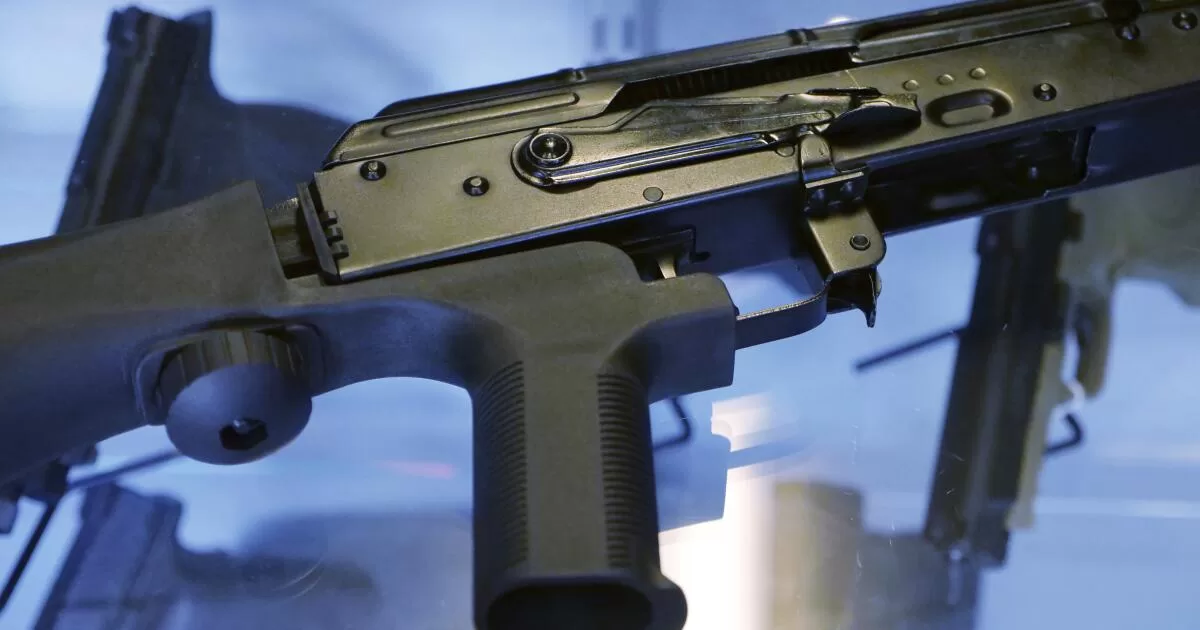The justices, both conservative and liberal, said Congress had intended to forbid rapid-fire rifles as especially dangerous. And that would include devices that convert a legal semiautomatic gun into one that “produces a torrent of bullets with one pull of the trigger,” said Justice Elena Kagan.
Justice Neil M. Gorsuch said it would have been better if Congress had revised the law after the mass shooting in Las Vegas in 2017, but he and other conservatives did not indicate they would vote to block a regulation adopted after that tragedy.
“It would have been irresponsible of AFT not to take action” after the deadliest mass shooting in the nation’s history, Deputy Solicitor General Brian Fletcher told the court.
On Oct. 1, 2017, a gunman on an upper floor of a Las Vegas hotel fired off more than 1,000 rounds in 11 minutes, leaving more than 500 concert goers injured and 58 dead. The shooter used AR-15 semi-automatic rifles equipped with bump stocks that allowed for fast, continuous firing.
Shortly afterward, President Trump ordered the Bureau of Alcohol, Tobacco, Firearms and Explosives, or AFT, to revise its rule and to outlaw bump stocks as illegal machine guns.
It is the rare instance of a gun regulation that is supported by prominent Republicans as well as Democrats, but it now faces a court whose conservative justices are often skeptical of agencies issuing new regulations reinterpreting old laws.
While they asked skeptical questions, none of the justices sounded ready to strike down the bump stock rule.
Justice Sonia Sotomayor questioned the need for such devices. “Why would a person choose to fire 400 to 800 rounds per minute?,” she asked.
Justice Ketanji Brown Jackson said the bump stock allows an AR-15 to operate like a machine gun. “These weapons are what Congress intended to prohibit,” she said.
Since 1934, Congress has restricted machine guns, which were defined as “any weapon which shoots…automatically more than one shot, without manual reloading, by a single function of the trigger.”
Prior to 2017, ATF said bump stock devices were not machine guns because the shooter had to press forward on the barrel as the recoil bumped or triggered another shot.
But after Trump’s order, ATF changed its position.
Its new rule said bump stocks were illegal machine guns because they function as “a self-acting or self-regulating mechanism that allows the firing of multiple rounds through a single function of the trigger.”
A bump stock is a plastic or metal piece that fits over the barrel. ATF says it rests against a shooter’s shoulder and “allows a semi-automatic firearm to shoot more than one shot with a single pull of the trigger by harnessing the recoil energy…so that the trigger resets and continues firing without additional physical manipulation of the trigger by the shooter.”
By 2018, when the ATF regulation took effect, about 520,000 bump stock devices were in the hands of gun owners and dealers. The agency said they must be destroyed or turned in.
Gun owners sued to challenge the new regulation. They lost in the U.S. appeals court in Denver, Cincinnati and Washington, D.C., but won before the 5th Circuit Court in New Orleans.
Michael Cargill, a gun shop owner in Austin, Texas, had sued and argued the government should not be permitted to change its rules and take away legally purchased weapons. He won a 13-3 decision in the 5th Circuit whose judges said bump stocks do not work “automatically” like a machine gun because the shooter must “maintain manual, forward pressure on the barrel” to keep firing.
In dissent, Judge Stephen Higginson faulted the majority for revising an ambiguous law “to legalize an instrument of mass murder.”
In November, the court agreed to hear the case of Garland vs. Cargill to decide the legality of the ATF regulation. The 2nd Amendment right to bear arms is not directly at issue.
California and 16 other states had already prohibited bump stocks, but state attorneys said those bans will be harder to enforce if bump stocks can be legally purchased in other parts of the nation.
